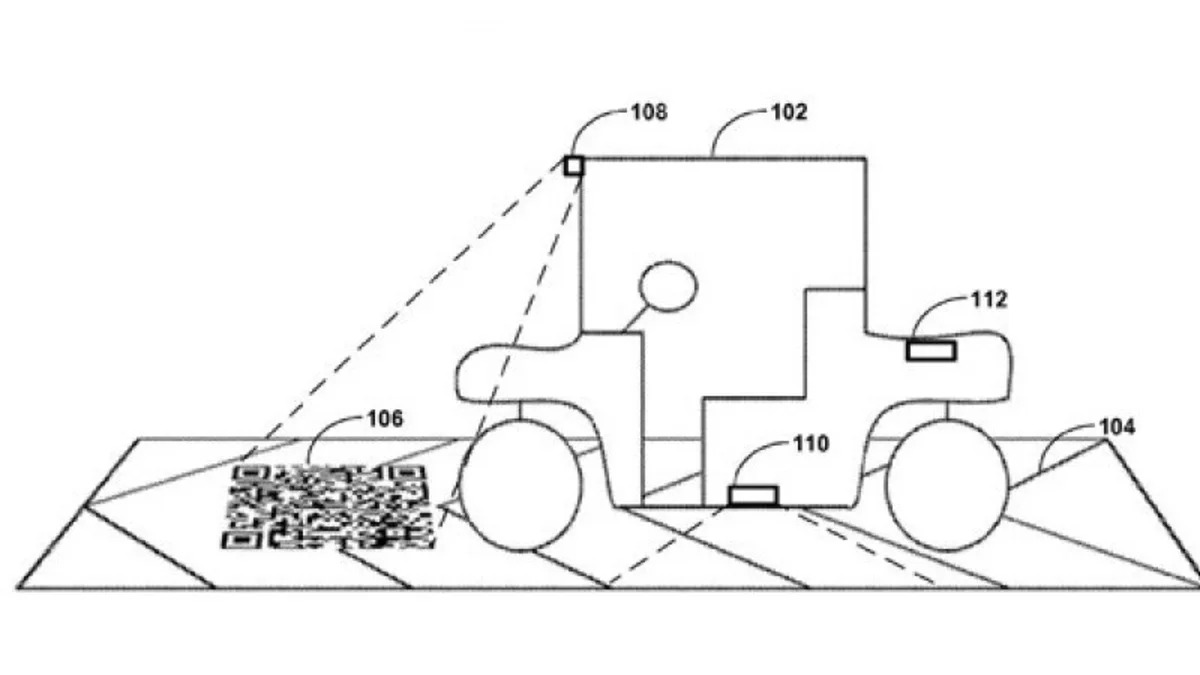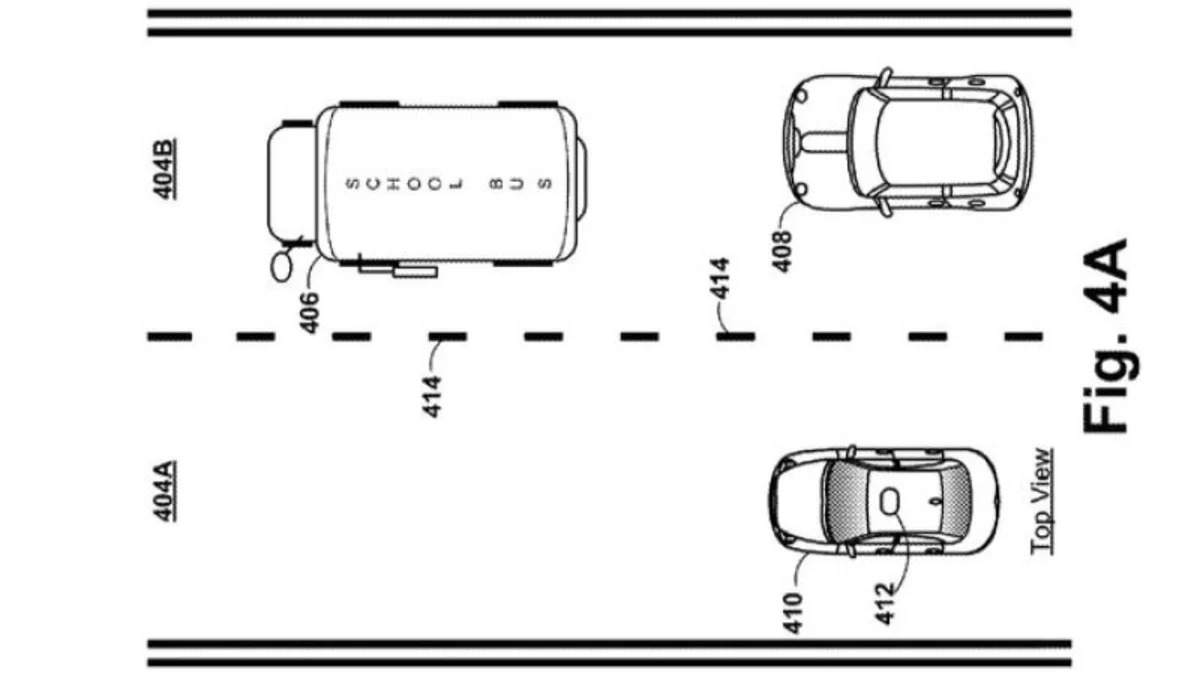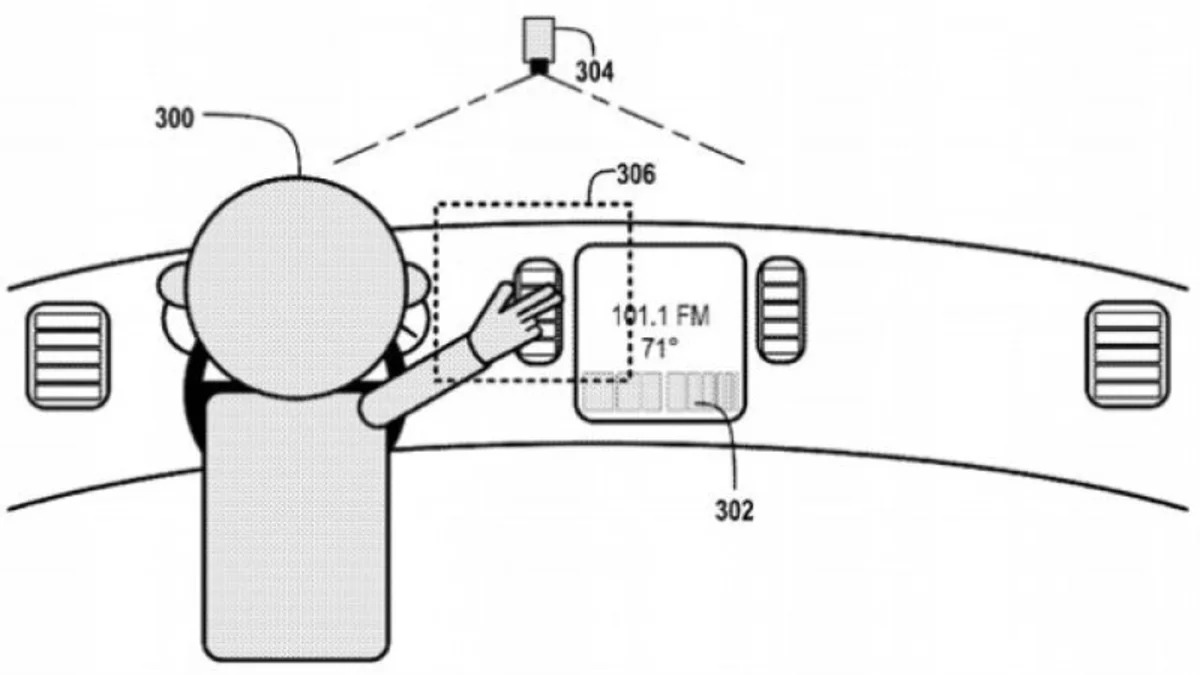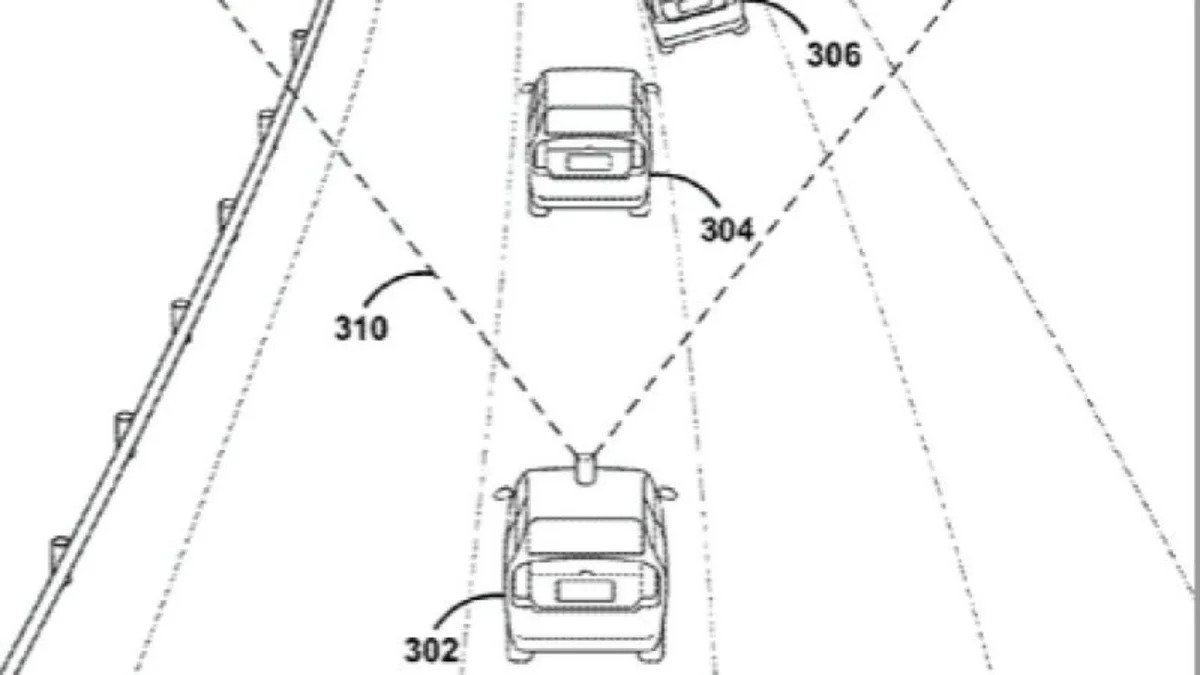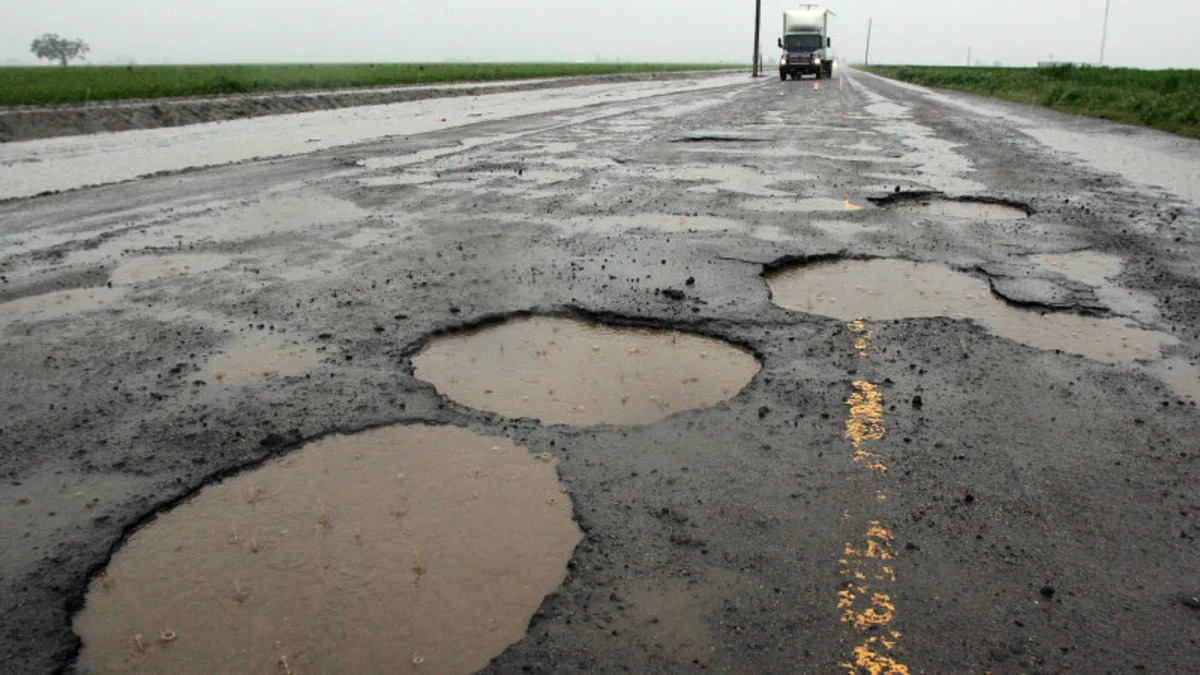Google Car Patents Show the Wild Future of Autonomy
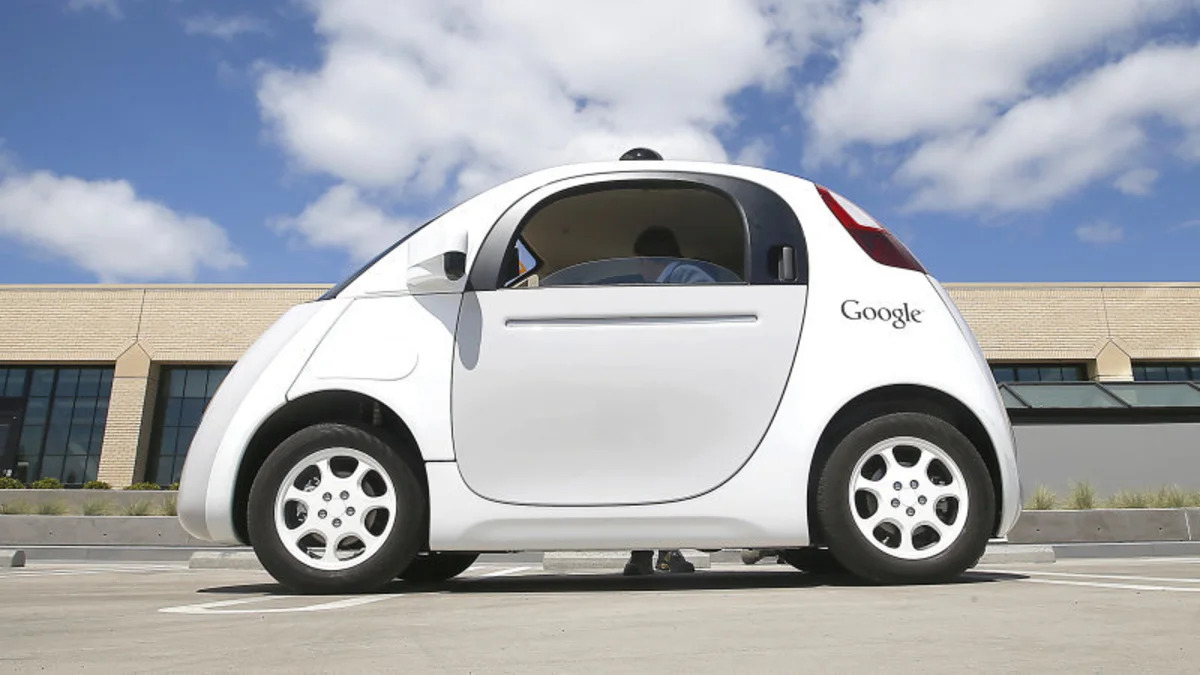
-

- Image Credit: Google
Google Car Patents Show the Wild Future of Autonomy
We know a few definitive things about the Google Car. It looks a bit like a golf cart with a koala's face. There's no steering wheel. And the egg-ish autonomous cars are racking up serious mileage in on-road testing in several West Coast cities.
But outside of those factoids, the Google Car has been such a secretive project that most of what we think we know about it has been gleaned from things like patent filings. And like many things that are patented, not all of them will likely make it from simplified patent drawing to actual real-world tech.
Some of them undoubtedly will, though. Let's look at what vehicle patents Google has filed so far, and what they tell us about the unusual little self-driving car.
-
- Image Credit: Google
Pedestrian-Impact Glue
It may look like a crash test dummy lounging on a police car during a snowstorm, but this drawing actually shows something far more bizarre. Google has patented a pedestrian-impact adhesive system, and the dummy in this drawing is glued to the hood of a generic Google Car.
That sounds silly until you examine why Google is interested in doing this. For one, it prevents the pedestrian from being thrown off the car and striking another object, causing secondary impact injuries. It also prevents the pedestrian from slipping off of the car and being run over.
The glue covers the front of the vehicle and is covered by a thin, protective coating. The force of a pedestrian hitting the coating would break it, releasing the adhesive and hopefully ensnaring the pedestrian to prevent further harm. It's an unusual but compelling idea. Will it make it to the Google Car? It'll depend on the system's cost and efficacy, but it's certainly not impossible.
-
- Image Credit: Google
Autonomous Driving
Long before the Google Car prototype revealed its marsupial-aping face, way back in 2011, Google patented a self-driving system. It was this patent that laid the groundwork for the prototypes we see today – and at the same time showed a path not taken.
U.S. patent number 8,078,349 describes a vehicle that can switch from regular human-operated driving to autonomous mode at the push of a button. Sort of. First, the operator needs to direct the machine to a predefined "landing strip." There, a "reference indicator" (think of something like a QR code affixed to the road) would combine with GPS coordinates to allow the vehicle to know its exact location.
Of course, this system isn't the one that Google adopted. There aren't QR codes embedded in the road all over Silicon Valley. And the current Google Car doesn't have a steering wheel shaped like a lollipop. Even so, it's one of the more interesting and unusual Google Car patents around.
-
- Image Credit: Google
Bus Detection
Once again, the universe demonstrates to us that it has a good sense of humor. Google now has a patent on bus detection for autonomous vehicles.
Google's patent technically outlines how to identify a school bus. The autonomous system would compare the relative sizes of vehicles on the road. Once it found something large enough, the software would check that against the known size of a school bus. The tech would also analyze the color, check for a stop sign, and search for the word "School" on the exterior.
Once the system positively identified the school bus, the software would tell the vehicle to operate more cautiously. It would also be ready for the vehicle's stop sign to deploy and expect a greater number of pedestrians. -
- Image Credit: Google
Gesture Controls
Just as touchscreens have infiltrated nearly every aspect of our lives over the past decade, gesture-based controls will do the same in the coming years.
Google has made no bones about its autonomous-vehicle aspirations and is expanding into wearable tech, has filed a patent to use gestures to control a vehicle. The system, if it ever arrives in the automobile, would use a depth camera mounted on the roof of the car and a laser scanner. So for example, swiping near a window would roll it down, while making a motion at the radio would adjust the volume.
It's not hard to imagine an army of motion-based controls, not unlike what we have on a multi-touch-enabled computer, where pinching would zoom in the navigation screen, and swiping at the vents would increase the temperature or fan speed.
Adding this sort of futuristic tech to an autonomous car would be an interesting and futuristic touch (no pun intended) indeed. -
- Image Credit: Google
Car to Car Video
-
- Image Credit: Google
Turn Signal Detection
This Google patent shows how to make autonomous vehicles detect other cars' turn signals and react to the information.
Google's patent would use a forward-facing camera to scan traffic ahead. A short exposure would detect bright objects especially well, and the technology would then look for changes in color at the rear of surrounding cars. Based on how the light oscillates, the software could determine if the turn signal or hazard lights are flashing. Google's autonomous car would then have the programming to react accordingly.
Autonomous vehicles need this type of tech to survive in a world where they are still in the minority on the road. Turn signal identification would give the driverless system extra warning about what's happening in the environment and avoid a potential collision. As Google continues to expand its autonomous testing to more areas with different types of roads, the cars require more sophisticated software to deal with the challenges. -
- Image Credit: Google
Pothole Detection Network
Potholes are incredibly annoying and can do serious damage to your vehicle's wheels and suspension. Unfortunately, unless you know an area well, there isn't a great way to predict their location until the divot is right in front of you. Google is aiming to fix the problem with a patent on a surprisingly simple solution to create a roving fleet of pothole reporters.
The system combines a GPS-equipped infotainment system and a vertical movement sensor somewhere on the vehicle. When a driver hits a pothole, the navigation system notes the location and sends the info into the cloud. Based on the amount of vibration on a given street, Google's servers can create a continuously upgrading database of the average road quality and can divert drivers around particularly bad sections when deciding on a route.
While patenting an idea doesn't necessarily mean that it hits the road, this system seems massively beneficial to all drivers. Plus, the concept doesn't seem too hard to implement, either. Google's use for this tech appears obvious, too. Given the company's fleet of autonomous vehicles, being able to route passengers around rough streets could be an especially welcome feature. The tech could go part of the way towards keeping folks in driverless cars from getting motion sickness.

